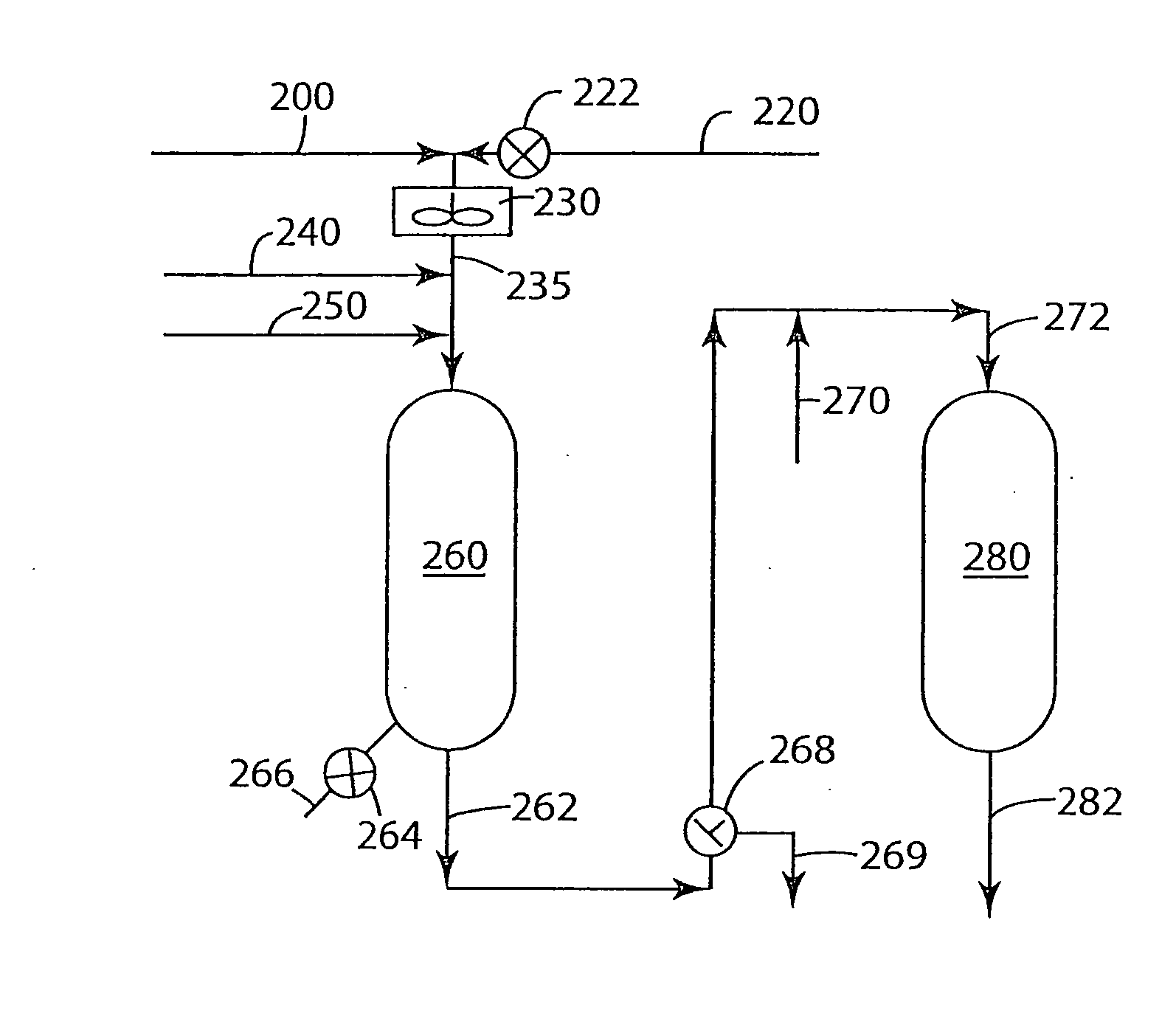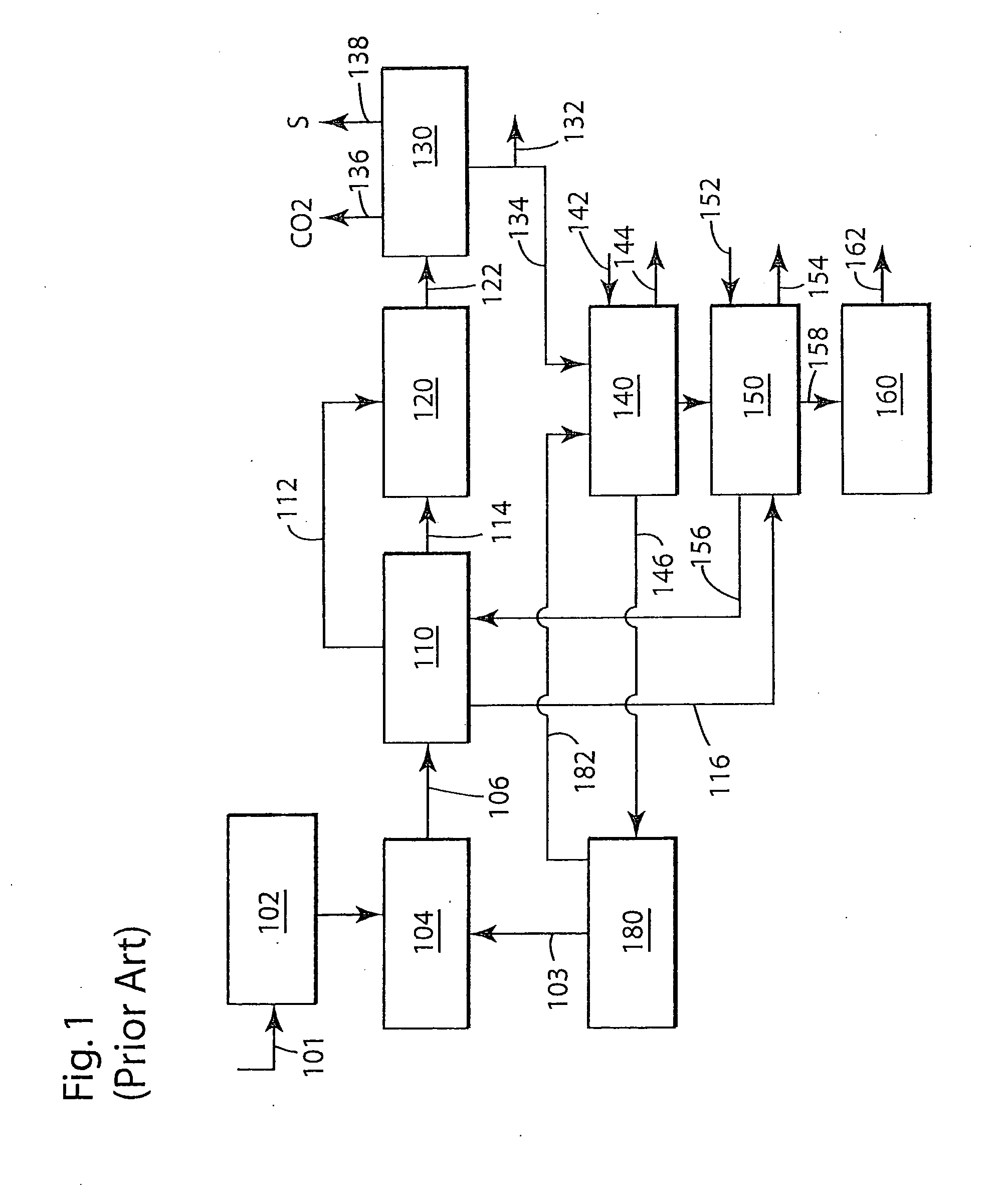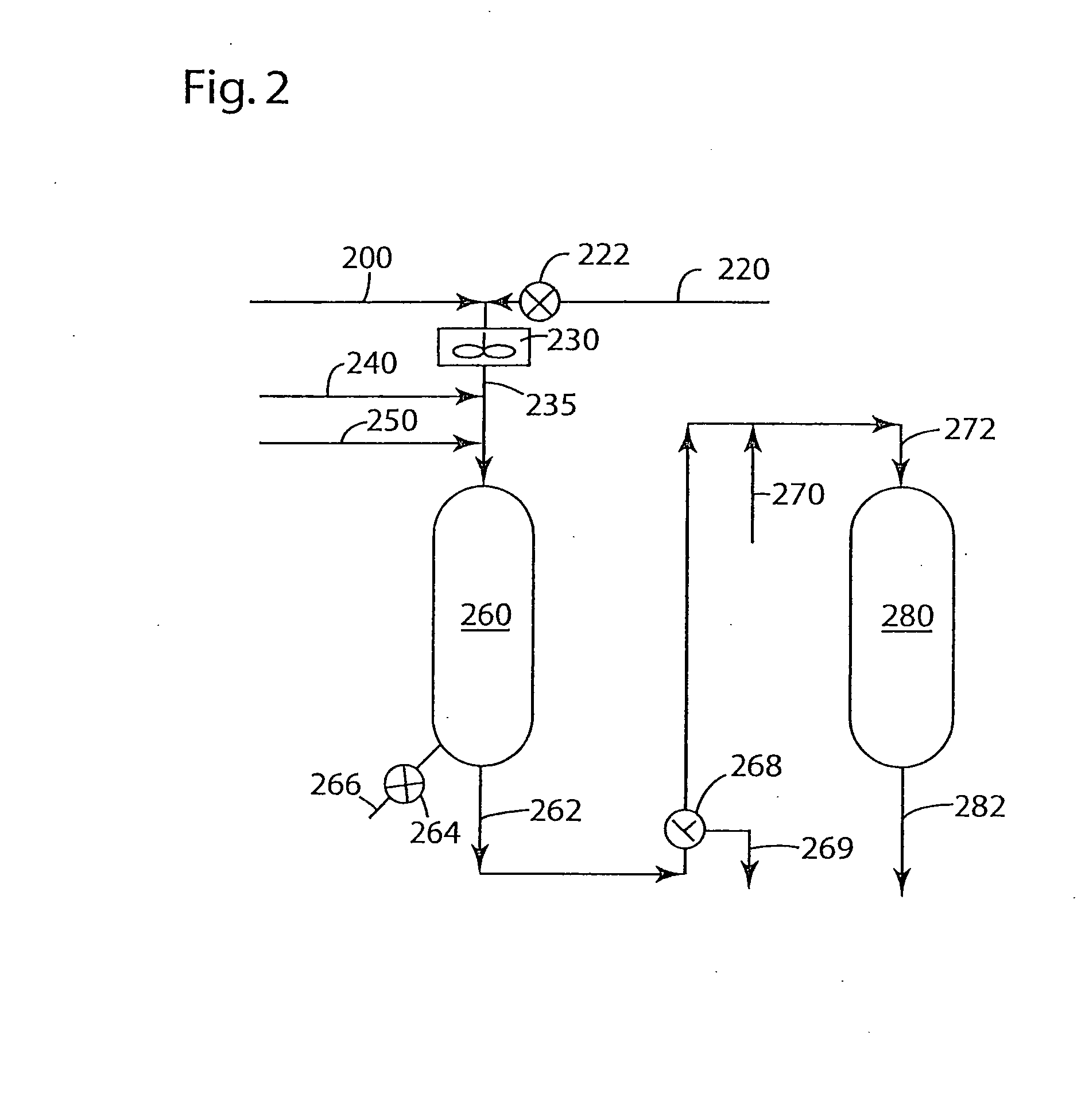Process for the gasification of waste tires with residual oil
a waste tire and gasification technology, which is applied in the field of gasification of waste tires with residual oil, can solve the problems of affecting the operation efficiency of the gasifier, the strength degradation of the refractory material, and the relatively limited life of the gasifier 104, etc., and achieves the effect of reducing the cost of refractory lining replacement, and improving the efficiency of the gasification process
- Summary
- Abstract
- Description
- Claims
- Application Information
AI Technical Summary
Benefits of technology
Problems solved by technology
Method used
Image
Examples
example 1
[0059]In this example, the process will be described with reference to FIG. 2. A liquid pitch stream 220 obtained from a solvent deasphalting process and shredded waste tire material 200 obtained after the steel wire has been removed are blended in mixing zone 230. The elemental composition of individual components and the final blend is set forth in Table 1. The pitch-to-waste tire ratio is 2.5, which is sufficient to produce at least about two (2) W % of solids in the feed mixture in order to assure efficient operation of the reactor over an extended period of time.
TABLE 1Feedstock PropertiesStream #200220235Elements\FeedstocksTirePitchBlendC, W %89.5085.4686.61H, W %7.308.257.98S, W %1.905.54.47N, W %0.300.790.65O, W %0.8000.23Ash, W %7.1002.03MW, kg / kg-mol600.00800742.8699.8010099.94
[0060]A predetermined volume of oxygen 240 or an oxygen-containing gas, and steam 250 are introduced and gasified in the gasification zone of a membrane wall reactor 260. The gasification reactor is ...
example 2
[0062]In this example, no liquid hydrocarbon material is utilized and only the shredded tire particles are gasified. The process will be described by reference to the schematic diagram of FIG. 4 where the waste tire particle stream 401 is fluidized with oxygen or air 402 in a metered mixing chamber 420 and the mixture 403 is introduced in the gasification zone 404 to produce the partial-combustion gases. The gasification zone reactor is operated at 1045° C. The water-to-carbon weight ratio is 0.6:1 and the oxygen-to-pitch (as waste tire material) weight ratio is 1:1. After the gasification, the products are sent to a water gas shift (WGS) reactor to increase the hydrogen yield. The water gas shift reactor is operated at 318° C., 1 bar of pressure and the water-to-hydrogen mol ratio is 3:1. The feedstock properties are set forth in Table 2A.
TABLE 2AFeedstock PropertiesElementsTireC, W %89.50H, W %7.30S, W %1.90N, W %0.30O, W %0.80Ash, W %7.1099.80
[0063]Processing subsequent to gasifi...
PUM
 Login to View More
Login to View More Abstract
Description
Claims
Application Information
 Login to View More
Login to View More - R&D
- Intellectual Property
- Life Sciences
- Materials
- Tech Scout
- Unparalleled Data Quality
- Higher Quality Content
- 60% Fewer Hallucinations
Browse by: Latest US Patents, China's latest patents, Technical Efficacy Thesaurus, Application Domain, Technology Topic, Popular Technical Reports.
© 2025 PatSnap. All rights reserved.Legal|Privacy policy|Modern Slavery Act Transparency Statement|Sitemap|About US| Contact US: help@patsnap.com



